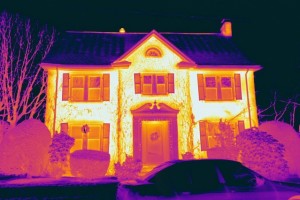Technology that can scan large areas to find which buildings are leaking heat and wasting energy. The latest news from MIT is regarding Essess bringing “drive-by” innovations to energy efficiency in homes and businesses. Over the past few years, Essess Inc. has deployed cars mounted with imaging sensors to drive around the U.S. creating heat maps that show which homes aren’t sealed properly, wasting energy and their owners’ money.
The startup deploys cars with thermal-imaging rooftop rigs that create heat maps of thousands of homes and buildings per hour, detecting fixable leaks in building windows, doors, walls, and foundations to help owners curb energy loss. About the size of a large backpack, Essess’ rig includes several long-wave infrared radiometric cameras and near-infrared cameras. These cameras capture heat signatures, while a LiDAR system captures 3-D images to discern building facades from the physical environment. An onboard control system has software to track the route and manage the cameras.
On the software side, computer vision and machine-learning algorithms stitch together the images, extract features, and filter out background objects. In one night, the cars can generate more than 3 terabytes of data, which is downloaded to an onboard system and processed at the startup’s Boston headquarters. Combining those heat maps with novel analytics, Essess shows utilities companies which households leak the most energy and which owners are most likely to make fixes, so they know where to direct energy-efficiency spending. This may include sending customers the thermal images of their homes along with information on the fixes that could offer the most return on investment.
The startup also works with the U.S. Department of Defense to help identify energy-wasting buildings on their bases. Schools, municipalities, oil refineries, and other organizations have hired Essess to scan their facilities and find fixes that might affect their heating bills in the winter, have a short payback period, or are within a certain budget. This approach could help utilities and customers make improvements in energy savings that are larger and longer-lasting.
For more information please visit: www.mit.edu

